Successes in the NSC's SONATA 18 competition
30.05.2023
Five MUG’s scientists have obtained funding for research projects from the National Science Centre (NSC) under the SONATA 18 call for a total amount of over PLN 4 million.
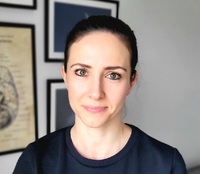
Aleksandra Rutkowska, Ph.D. from the MUG’s Brain Diseases Center received funding in the amount of PLN 1,707,496 for the implementation of the project entitled EBI2 receptor as a new target for myelin repair therapy in multiple sclerosis. The study aims to identify and characterize the molecular and cellular mechanisms regulating myelin repair in the CNS through the EBI2 receptor and its natural ligand oxysterol 7α,25OHC.
Krzysztof Basiński, Ph.D. from the Division of Quality of Life Research obtained, with the financial support of the Office for Research, funding for a project entitled Harmonity in auditory perception for the amount of PLN 1,430,083.
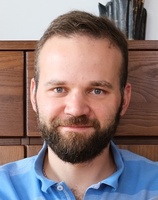
– Predictive processing is one of the most promising theories developed in neuroscience in recent years. Its assumptions are to integrate the processes of perception, learning and action, offering a coherent description of the nervous system as a machine for predicting future events. The aim of our project is an attempt to empirically verify one of the important hypotheses resulting from predictive processing – explained Krzysztof Basiński, Ph.D. – _To this end, we will conduct a series of experiments in which I will record the brain activity of healthy volunteers using electroencephalography. Subjects will listen to sounds that will be artificially manipulated for harmonics – an important property of the acoustic wave that can affect the predictive processing of future sounds.
Project financing by Krzysztof Basiński, Ph.D. was awarded in the discipline of humanities in the HS6 panel.
– This is the MUG’s greatest achievement in the field of projects funded by the National Science Center for the humanities – if not the only one. Probably also the largest among medical universities in this respect – said Prof. Michał Markuszewski, Vice-Rector for Science. – Supporting MUG researchers who operate on the borderline of medical sciences and other areas of science, e.g. the humanities, has enormous scientific and grant potential. I am very happy and sincerely congratulate Krzysztof Basiński, Ph.D. for this success, which we appreciate all the more, because the area of his research was recognized at the University from the very beginning and was supported by the Office for Research.
In the research of Krzysztof Basiński, Ph.D. will be attended by two scientists from abroad: David R. Quiroga Martinez from the Helen Willis Neuroscience Institute, UC Berkeley (USA) and Alejandro Blenkmann from the RITMO Center for Interdisciplinary Studies in Rhythm, Time and Motion, University of Oslo (Norway).
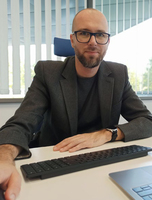
Project Going beyond predicting classical lipophilicity – phospholipid affinity modeling based on IAM chromatography and machine learning methods – development of a new bioinformatics tool will be carried out under the supervision of Dr. Habil. Krzesimir Ciura from the Department of Physical Chemistry. The National Science Centre allocated PLN 782,400 for this purpose.
– One of the key aspects when evaluating potential drug candidates is to determine their physicochemical properties such as lipophilicity, solubility in the aqueous environment and affinity for phospholipids and plasma proteins. It should be remembered that each medicinal substance must reach the target site in the appropriate concentration and remain in the bioactive form long enough for the expected pharmacological effect to occur – explained Dr. Habil. Krzesimir Ciura. – Current research indicates that inadequate pharmacokinetic properties, which include: absorption, distribution, metabolism and elimination (ADME), are one of the main reasons for failure in the development of new drugs. It is estimated that in the case of 6 out of 7 candidates tested, it was the inadequate pharmacokinetic properties that led to the suspension of further clinical trials.
Currently, numerous mathematical models and programs are available to assess lipophilicity and affinity to plasma proteins. However, there are no tools to predict phospholipid affinity. The project aims to fill this gap and develop an approach that will enable the estimation of affinity for phospholipids based on the structure of the molecule.
Two SONATA projects will be implemented in a consortium with the Gdańsk University of Technology.
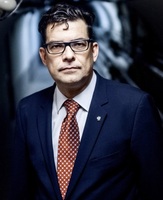
Shape variability in mathematical modeling of the human abdominal wall is the topic of the project carried out by Prof. Maciej Śmietański from the 2nd Division of Radiology of the MUG in cooperation with Katarzyna Szepietowska, Eng. D. from GUT. The study concerns the modeling of the abdominal wall in the medical context of the problem of abdominal hernias. Its aim is to take into account the diversity of the shape of the abdominal wall in mathematical modeling and to assess its impact on the mechanical behavior of the abdominal wall system with an implanted abdominal wall.
The project will propose a methodology that combines statistical shape modeling, uncertainty quantification and sensitivity analysis to build a model of the abdominal wall with a wider range of applications in the treatment of abdominal hernias due to the diversity included. On the basis of CT scans, three-dimensional geometries of the abdominal walls will be reconstructed. To capture the diversity of shape, a statistical model of the shape of the human abdominal wall will be built based on these geometries. The results obtained from the research may be useful in surgical practice and lead to the personalization of hernia treatment. The MUG will receive funding in the amount of PLN 87,840.
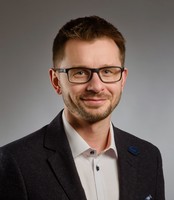
Implementation of the project entitled Mechanics of transtrochanteric fractures of the femur: combined analysis in vivo, in vitro and in silico will be undertaken by Dr. Habil. Marcin Ceynowa from the Department of Orthopaedics and Traumatology in cooperation with Krzysztof Żerdzicki, Eng. D. from GUT. Its main goal of the project is to develop a methodology for building a reliable computational model to perform numerical (in silico) analysis of transtrochanteric fracture fixation and to conduct related laboratory (in vitro) biomechanical studies. From the medical point of view, the most important goal of the research is to conduct a clinical, laboratory and numerical analysis of the biomechanics of unstable transtrochanteric fracture fixed with a short intramedullary nail (gamma nail). The National Science Centre co-financed the project with the amount of PLN 170,800.
– In the experimental part of the project, composite artificial bones will be used to create physical models of transtrochanteric fractures joined with a short nail. In addition, the use of a reinforcing cable loop will be analyzed for selected cases of fractures. The loads on physical models of anastomosis during laboratory tests are to reflect the forces generated on the femur during the patient’s movement in the postoperative period, i.e. when walking and getting up from a chair – explained Dr. Habil. Marcin Ceynowa.
The obtained experimental results will then be used to validate the numerical model of fracture fixation. Forces generated by muscles will also be taken into account in experimental and numerical models. Next, the uncertainties regarding the variety of mechanical and geometrical properties of human bones will be taken into account and their impact on the assessment of fixation stability will be checked. The results of laboratory and numerical tests will be finally combined with clinical observations of patients with pre-, intra- and post-operative fractures. Control radiographs will be analyzed in terms of the quality of the performed anastomosis and the position of its elements.
Information about competition
The SONATA 18 call was intended for researchers who obtained a doctoral degree in the period from 2 to 7 years before the year of submitting the proposal. Documents could be submitted from September 15 to December 15, 2022. 18 applications were sent from our University, of which 12 were individual projects, and 6 were planned to be implemented in partnership with other universities. As many as 5 projects proposed by scientists from our University received funding, which gives a success rate of 27.8% (for comparison, the success rate for the entire NCN call was 12.7% in this edition). In total, the MUG received funding in the amount of PLN 4,178,619, of which PLN 685,656 are indirect costs.
photo: Michał Szlaga, private archive